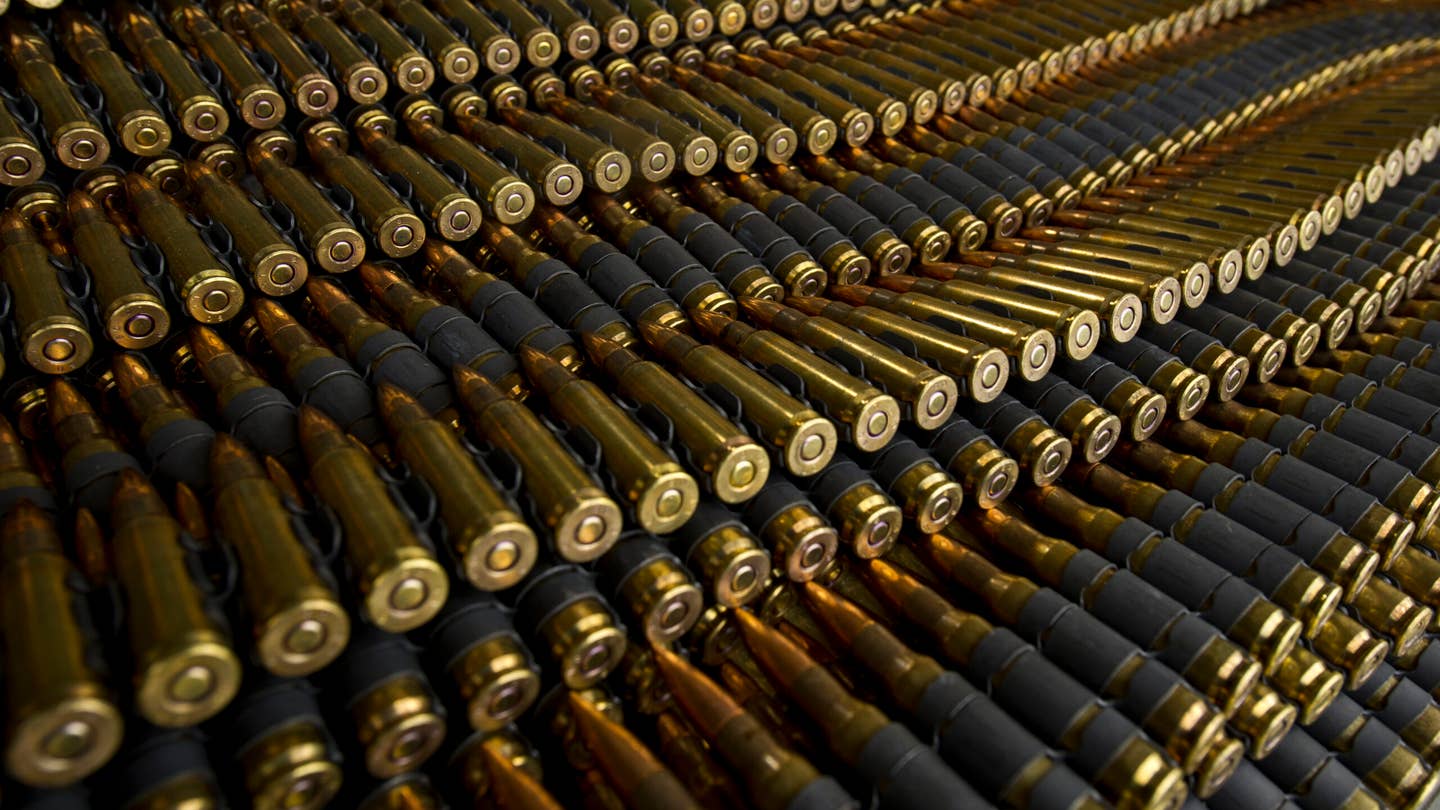This military bullet is less powerful than its civilian variant

U.S. Air Force photo by Tech. Sgt. Michael Holzworth/Released.
SUMMARY
After World War II, the firearms industry began to embrace the intermediate cartridge. Less powerful than full-size rifle cartridges like the .30-06 Springfield used in the M1 Garand, but more powerful than pistol cartridges like the .45 ACP used in the M1911, a weapon chambered in an intermediate caliber allowed soldiers to carry more ammunition and achieve fire superiority at close range. While the Soviets adopted a true intermediate cartridge with the 7.62x39mm in the AK-series of rifles, the U.S. forced NATO to adopt a faux intermediate cartridge: 7.62x51mm NATO. Interestingly, the civilian variant of this round is actually more powerful.
World War I saw the beginnings of the transition from bolt-action to semi-automatic rifles. As militaries around the world explored the viability of the new action, a logistical question arose: can we use the same ammo? After all, nations amassed huge stockpiles of their rifle ammo, which was often used in their machine guns as well, during the war. Although the U.S. Army was interested in adopting the semi-automatic Pedersen rifle and its .276 Pedersen cartridge, existing quantities of .30-06 from WWI led to the adoption of the M1 Garand and its re-chambering to the legacy cartridge.
In the 1940s, the U.S. resumed its attempt to replace the .30-06 with the T65 series of experimental cartridges. Based on the .300 Savage cartridge, the T65s were ballistically very similar to .30-06 and only slightly shorter. In contrast, the British designed a true intermediate cartridge capable of controllable automatic fire called .280 British. However, unwilling to sacrifice long-range performance, the U.S. insisted that NATO adopt the T65E5 cartridge, which was later standardized as 7.62x51mm NATO.
Seeing the potential of the T65 on the civilian market, Winchester introduced the new cartridge as .308 Winchester in 1952. This was two years before NATO adopted the T65E5 as 7.62 NATO. Marketed as a hunting caliber, Winchester chambered its popular Model 70, 88 and 100 rifles in .308 Winchester. With similar performance to .30-06 in a slightly shorter cartridge, the new round quickly gained popularity with hunters and precision sport shooters.
Although .308 Winchester and 7.62 NATO share a common heritage in the T65 and are visually similar, they aren't the same. While the two rounds can be chambered in weapons designed for the other, .308 Winchester is loaded to a higher pressure. It has the same case dimensions as 7.62 NATO, but thinner case walls. This means that .30 Winchester can hold slightly more gunpowder. The Sports Arms and Ammunition Manufacturers' Institute lists the maximum pressure of .308 Winchester as 62,000 psi, while NATO EVPAT maximum pressure for 7.62mm NATO is 60,191 psi. Moreover, the headspacing for the two cartridges is different.
The general rule of thumb is that a weapon chambered in .308 Winchester can safely fire weaker 7.62mm NATO rounds. Because of the higher pressure and different headspace, .308 Winchester may not function properly in a weapon chambered in 7.62mm NATO. Although modern 7.62mm NATO firearms are engineered to be strong enough to handle the more powerful .308 Winchester, it's important to make sure that the manufacturer rates it for the round. To be on the safe side, use the caliber that the weapon is marked with.
SHARE
